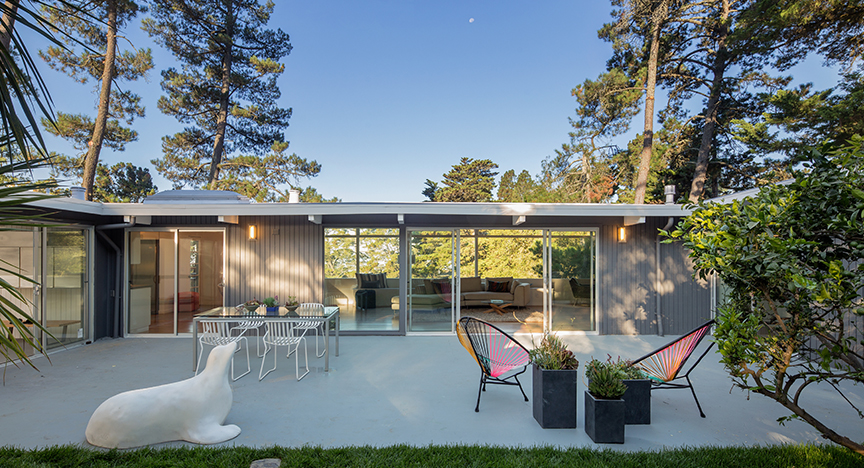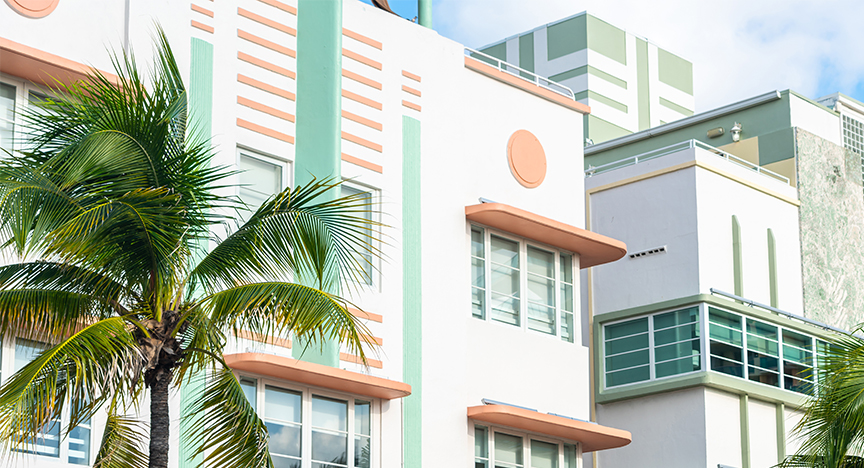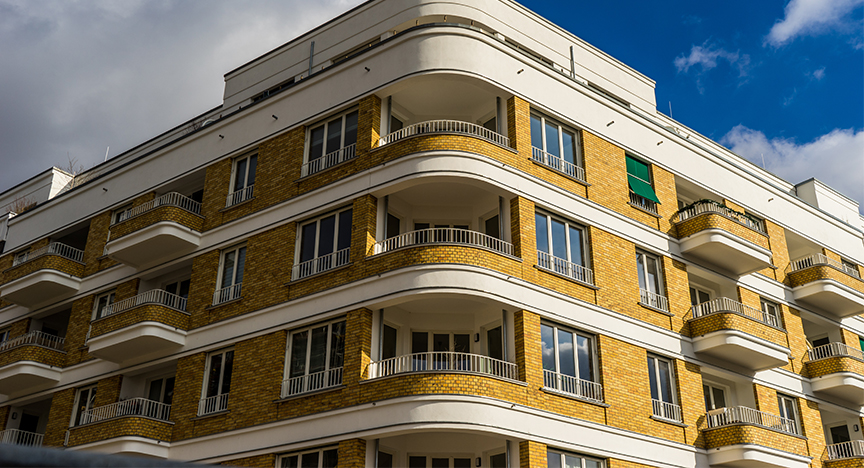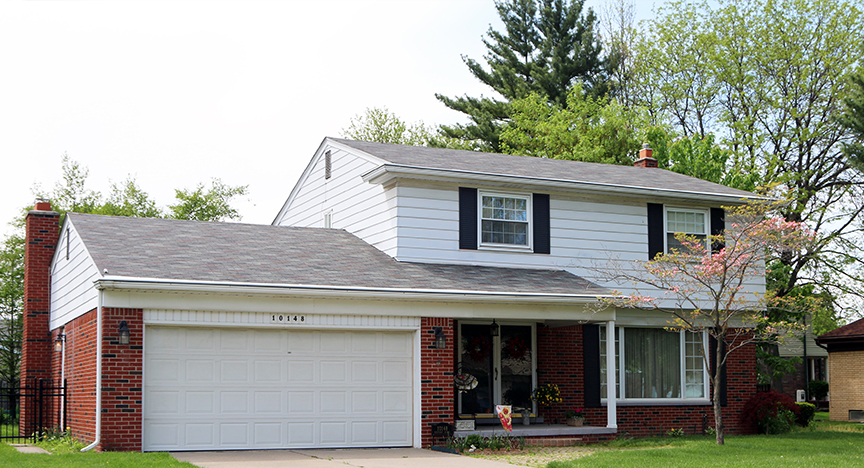The 1940s is a decade defined by change. With the world slowly coming to terms with (and rebuilding from the) atrocities of World War II, hope slowly began to creep back in through the advent of new technologies, the NHS, and the Windrush Generation, helping to diversify and enrich Britain's cultural tapestry.
On a smaller scale, decor styles also saw their boom, with key elements of interior design that we still love today being popularised.
It's these Art Deco-infused trends that we're focusing on with this round-up of the 1940s best interior design elements. So, if you're ready to spruce up your home and incorporate some retro themes into it, look no further than Make My Blinds.
What influenced the 1940s interior design style?
Practical Thinking
During the first half of the '40s, the Second World War was at the front of everyone's minds, and there was little time or money for glamour and indulgence. This led to a focus on practicality and natural materials, with minimalist, functional, and wooden furniture contrasting with bright colours and splashes of personality in wallpaper prints and decorations.
Modernism
Modernism in 1940s UK interiors brought functionality, sleekness, and a dash of futuristic flair to homes, even in the midst of wartime chaos.
While wartime constraints impacted the full realisation of modernism, it worked well with the functionality and minimalism of the time. Utility Furniture was designed with a modernist approach, prioritising practicality, clean lines, and efficiency.
Towards the end of the 1940s, a sneak peek of mid-century modernism emerged. Organic shapes, natural materials, and a nod to nature started to show promise of a design revolution.
Comfort and tradition
The 1940s were turbulent, and homes became sanctuaries from the chaos. Comfort took centre stage as people sought solace and a sense of normalcy within their own four walls.
People held onto sentimental treasures. Family heirlooms, vintage pieces, and cherished items brought a sense of continuity.
Floral prints were common for wallpaper and textiles, and ruffled draperies helped to add extra comfort. Hardwood floors were considered old-fashioned, so many homes introduced wall-to-wall carpets. This statement piece offered new warmth and cosiness for families and was affordable.
Patriotism
Homes became expressions of national identity and solidarity during World War II. With resources scarce due to rationing, the ‘Make Do and Mend’ ethos became a design philosophy. People repurposed and upcycled furniture, and DIY projects flourished.
Red, white, and blue also took centre stage. These patriotic hues adorned everything from curtains to cushions. The design choices reflected a commitment to weathering the storm of shared challenges.
Bold/high-contrast colour schemes
Colours have the power to influence mood, and in the 1940s, they were used strategically to boost morale. Bright and contrasting colours created lively, uplifting environments, fostering a sense of optimism and resilience.
Vibrant hues, especially high-contrast combinations like red and white or navy and yellow, injected a dose of cheerfulness into homes.
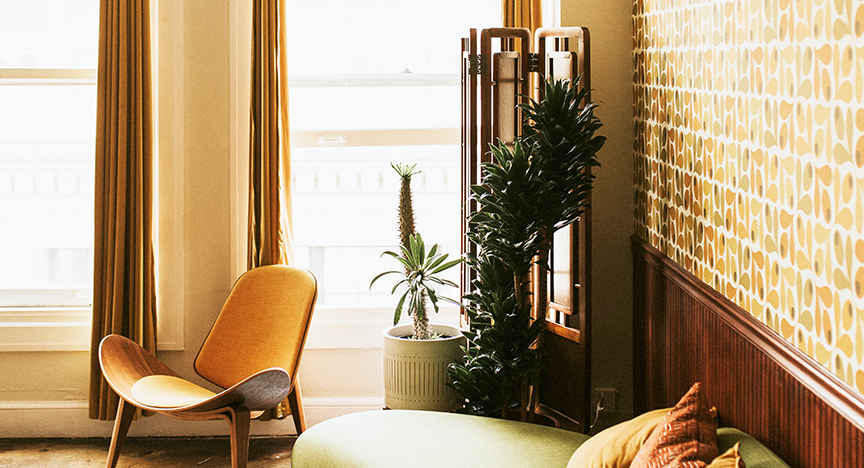

The top interior design trends from the 1940s
Interior design in the 1940s was about injecting personality, colour and liveliness into the home. Above all, the decade's trends were characterised by the following:
Pastel colours
To balance the natural tones of the furniture that was so popular in the 1940s, pastel colours, like mint green, peach and baby blue, were popular and brought a vivid contrast to spaces like kitchens and living areas.
Patterned wallpapers
Continuing the colourful theme, patterned wallpaper enhanced homes by adding texture to walls. From bold floral patterns to geometric chevrons and herringbone prints, these wallpapers helped to break up the sleek, minimalist lines of the furniture that was so stylish at the time.
Natural materials
As mentioned, natural materials, particularly wood furniture, were all the rage during the 40s. Understated, straight-lined pieces were all of the rage and provided a stylish contrast to the somewhat overstated wallpapers and paint schemes so many homes were decorated with.
Bring natural materials into your 1940s-inspired home by choosing wooden blinds or cotton curtains.
Rich fabrics
Incorporating elegance into the home was a big deal in the 1940s. With so many television sets in homes and Hollywood's everlasting allure, people attempted to emulate what they saw on the silver screen and their TV sets.
One way of doing this was infusing the home with rich materials like velvet, silk and satin. These fabrics regularly covered cushions, pillows, furniture and curtains during the '40s.
Bold colours
When the world was in some of its darkest hours, people could always turn to their homes to provide some sanctuary. One of the ways people lifted their moods was by decorating their homes with bright colours.
Vivid greens and brilliant pinks were favourites of many a colour palette and helped to add much-needed warmth and charm to homes. These hues also worked well with pastel shades and helped to create eye-catching colour schemes.
Another key benefit to these shades is that they add a softer touch to the home, bringing balance to rooms that would have otherwise been characterised by the straight lines and natural materials that were so popular during the decade.
1940s interior design trends by room
If you're dreaming of infusing some vintage design trends into your home…
Living rooms
- Natural materials: Whether it's a wooden coffee table, wooden blinds or a rattan chair, incorporating more natural materials into your home will give it a wonderfully chic aesthetic. Better still, consider buying second-hand furniture for a truly authentic look and vintage feel.
- Warm colour palettes: Warm and comforting colour palettes, including earthy tones and muted hues, were popular choices. Create a cosy ambience with warm colours like mustard, olive green, and deep burgundy. Blend these tones with modern neutrals for a balanced and inviting living room.
Kitchens
- Metal cabinets: Metal cabinets were a popular choice due to their durability and ease of maintenance. Incorporate metal elements in your kitchen, such as stainless steel appliances or brushed nickel hardware. An easy way of bringing metallic accents into your kitchen (beyond the pots, pans and cutlery…) is with metal Venetian blinds.
- Linoleum: Linoleum flooring was a practical and budget-friendly choice in 1940s kitchens. Explore modern linoleum alternatives or opt for patterned ceramic tiles to achieve a retro look with a contemporary touch.
Bedrooms
- Florals: Floral patterns were common in 1940s bedrooms, adding a touch of nature indoors. Incorporate floral prints on bedding, pillows, or wall art for a timeless, nature-inspired ambience.
- Blackout curtains: Heavy blackout curtains were popular for their practicality and light-blocking features. Choose modern blackout curtains that offer both functionality and style. Opt for sleek designs and contemporary patterns to complement your bedroom decor.
Dining rooms
- Bold colour accents: Bold colour accents, often in the form of chair upholstery or accessories, add vibrancy to dining rooms. Inject pops of bold colour through modern dining chairs, vibrant tableware, or decorative accents.
- Art Deco influences: Art Deco influences, characterised by bold geometric shapes and glamorous details, were prevalent in dining room design. Opt for Art Deco elements like statement lighting fixtures, patterned rugs, bold wall art or geometric blinds.
Bathrooms
- Pastel colour schemes: Bathrooms in the 1940s often featured soft pastel colour schemes, creating a calming and inviting atmosphere. Embrace pastel hues for bathroom walls, tiles, and accessories. Opt for modern pastel shades like blush pink, mint green, or powder blue to bring a touch of retro charm to contemporary spaces.
- Retro accessories: Vintage accessories like vanity trays, soap dispensers, and ornate mirrors were common in 1940s bathrooms. Look for vintage-style mirrors, chic soap dispensers, and stylish trays to add character to your bathroom.
1940s-inspired blinds and curtains from Make My Blinds
Here, we've picked out some of our favourite blinds and curtains to give your home that classic mid-century look. To help you recreate the '40s in your home, we've chosen exciting floral prints and bright colours and even injected some class into the proceedings with our faux silk curtains.
- Panama Rose Pink Curtains: These curtains are one of our more understated choices. This gorgeous pastel hue can accentuate bright wallpapers and help elevate your space with a subtle luxury. You can even pair these with our antique brass eyelets to really feed into that mid-century aesthetic.
- Aloe Lima Roller Blind: This striking aloe vera leaf patterned blind is ideal for creating a lively and energetic mood in any room.
Giovanni Quartz Curtains: If you want to create a cosier atmosphere, perfect for conversing with friends, these darker, more striking Giovanni Quartz Curtains are a must. The curtains are a bold black, with bursts of colour from floral patterning, a supremely refined take on classic flower decorations. - Flamingo Flock with Navy Blind: This charming, colourful blind adorned with vivacious pink flamingos feels like it was pulled right out of the '40s with its uber-chic design and colour palette.
- Opulant Faux Silk Peacock Rivera Curtains: Silk curtains and showing a little class were all the rage during the '40s, so what better way to offer subtle sophistication than with these faux silk curtains? Better still, we've picked these in a lovely pastel teal shade to complement your other 1940s interior design elements down to a tee.

